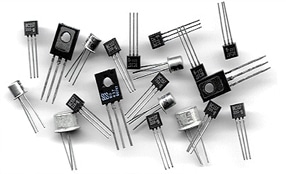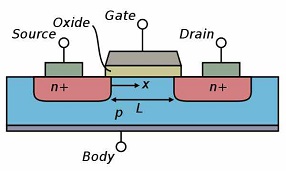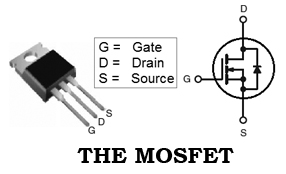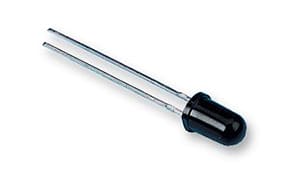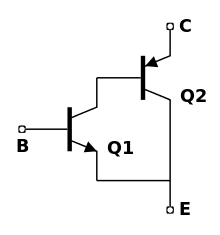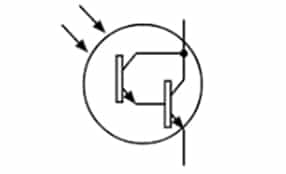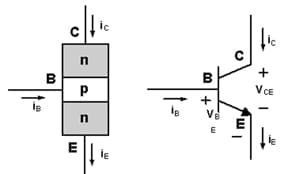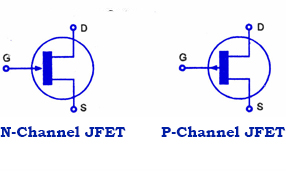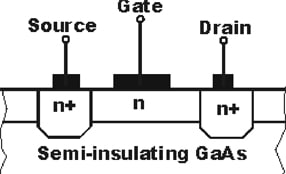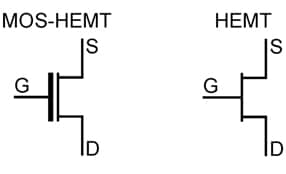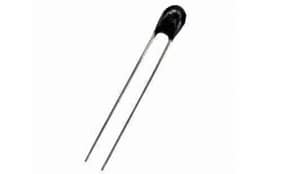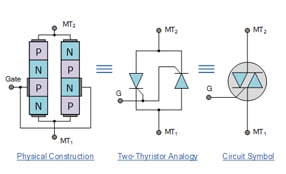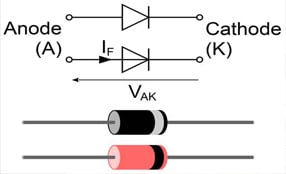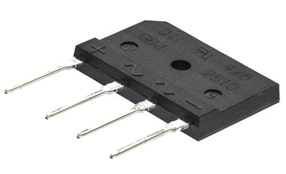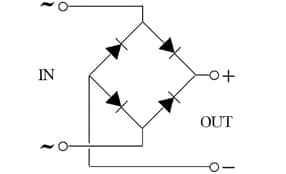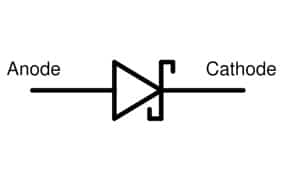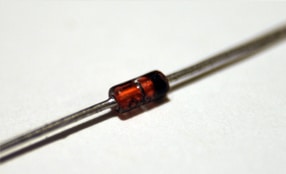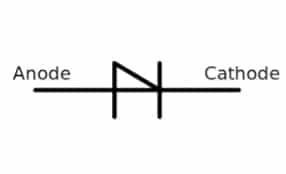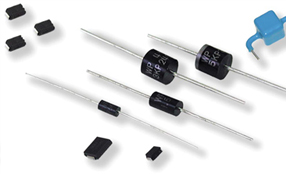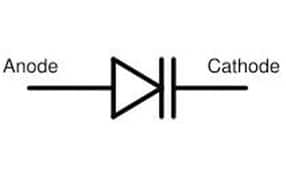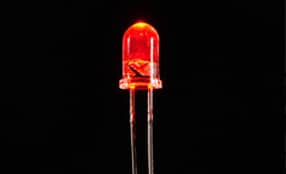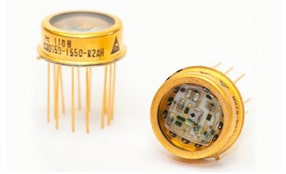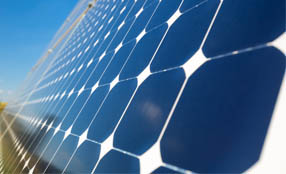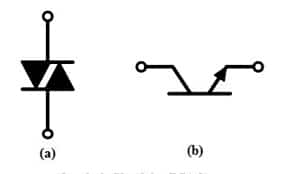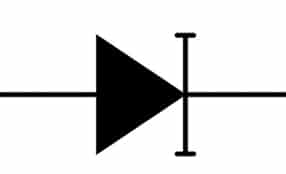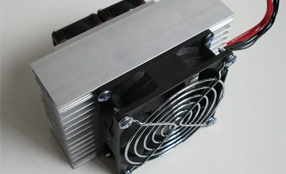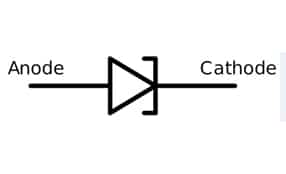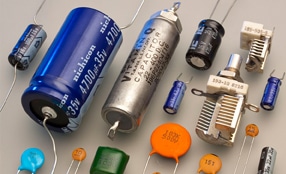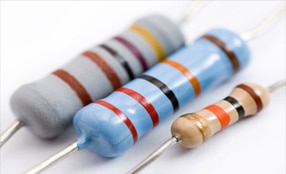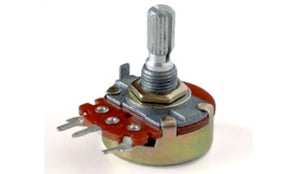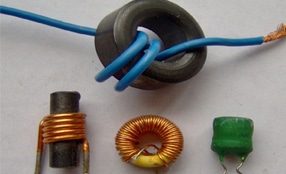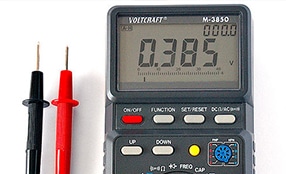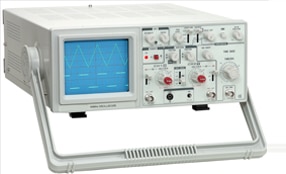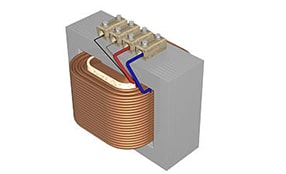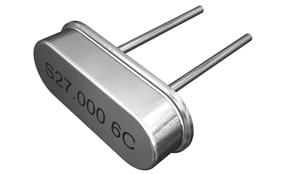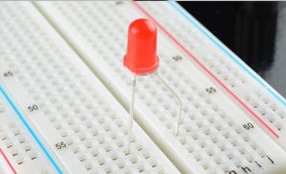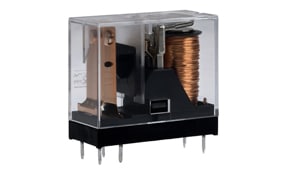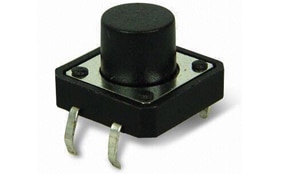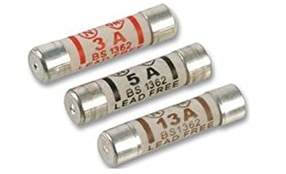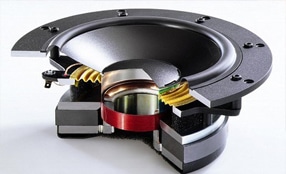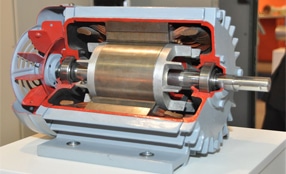UNDERSTANDING ELECTRONIC COMPONENTS
UNDERSTANDING ELECTRONIC COMPONENTS
UNDERSTANDING ELECTRONIC COMPONENTS
What are Electronic components? An electronic component is any basic discrete device or physical entity in an electronic systemused to affect electrons or their associated fields. Electronic components are mostly industrial products, available in a singular form and are not to be confused with electrical elements, which are conceptual abstractions representing idealized electronic components.
Electronic components have a number of electrical terminals or leads. These leads connect to create an electronic circuit with a particular function (for example an amplifier, radio receiver, or oscillator). Basic electronic components may be packaged discretely, as arrays or networks of like components, or integrated inside of packages such as semiconductor integrated circuits, hybrid integrated circuits, or thick film devices. The following list of electronic components focuses on the discrete version of these components, treating such packages as components in their owner right.
Classification
Components can be classified as passive, active, or electromechanic. The strict physics definition treats passive components as ones that cannot supply energy themselves, whereas a battery would be seen as an active component since it truly acts as a source of energy.
However, electronic engineers who perform circuit analysis use a more restrictive definition of passivity. When only concerned with the energy of signals, it is convenient to ignore the so-called DC circuit and pretend that the power supplying components such as transistors or integrated circuits is absent (as if each such component had its own battery built in), though it may in reality be supplied by the DC circuit. Then, the analysis only concerns the AC circuit, an abstraction that ignores DC voltages and currents (and the power associated with them) present in the real-life circuit. This fiction, for instance, lets us view an oscillator as “producing energy” even though in reality the oscillator consumes even more energy from a DC power supply, which we have chosen to ignore. Under that restriction, we define the terms as used in circuit analysis as:
- Active components rely on a source of energy (usually from the DC circuit, which we have chosen to ignore) and usually can inject power into a circuit, though this is not part of the definition. Active components include amplifying components such as transistors, triode vacuum tubes (valves), and tunnel diodes.
- Passive components can’t introduce net energy into the circuit. They also can’t rely on a source of power, except for what is available from the (AC) circuit they are connected to. As a consequence they can’t amplify (increase the power of a signal), although they may increase a voltage or current (such as is done by a transformer or resonant circuit). Passive components include two-terminal components such as resistors, capacitors, inductors, and transformers.
- Electromechanical components can carry out electrical operations by using moving parts or by using electrical connections
Most passive components with more than two terminals can be described in terms of two-port parameters that satisfy the principle of reciprocity—though there are rare exceptions. In contrast, active components (with more than two terminals) generally lack that property.
Active components
Active components
Transistors
Transistors
Transistors
A transistor is a semiconductor device used to amplify or switch electronic signals and electrical power. It is composed of semiconductor material usually with at least three terminals for connection to an external circuit.
FIELD-EFFECT TRANSISTOR
FIELD-EFFECT TRANSISTOR
The field-effect transistor (FET) is a transistor that uses an electric field to control the electrical behaviour of the device. FETs are also known as unipolar transistors since they involve single-carrier-type operation. Many different implementations of field effect transistors exist. Field effect transistors generally display very high input impedance at low frequencies.
MOSFET (Metal Oxide Semiconductor FET) – N-CHANNEL or P-CHANNEL
JFET (Junction Field-Effect Transistor) – N-CHANNEL or P-CHANNEL
The metal-oxide-semiconductor field-effect transistor (MOSFET, MOS-FET, or MOS FET) is a type of field-effect transistor (FET), most commonly fabricated by the controlled oxidation of silicon. It has an insulated gate, whose voltage determines the conductivity of the device. This ability to change conductivity with the amount of applied voltage can be used for amplifying or switching electronic signals. A metal-insulator-semiconductor field-effect transistor or MISFET is a term almost synonymous with MOSFET. Another synonym is IGFET for insulated-gate field-effect transistor.
Photo transistor – Amplified photodetector
Photo transistor – Amplified photodetector
A photodiode is a semiconductor device that converts light into an electrical current. The current is generated when photons are absorbed in the photodiode. A small amount of current is also produced when no light is present. Photodiodes may contain optical filters, built-in lenses, and may have large or small surface areas.
Sziklai pair
Sziklai pair
In electronics, the Sziklai pair (also known as a complementary feedback pair (CFP) or "compound transistor", and as a "pseudo-Darlington") is a configuration of two bipolar transistors, similar to a Darlington pair.[1] In contrast to the Darlington arrangement, the Sziklai pair has one NPN and one PNP transistor, and so it is sometimes also called the "complementary Darlington".
Photo Darlington
Photo Darlington
Another form of phototransistor that is often seen and belongs to the same family is called the Darlington phototransistor, or photodarlington.
The photodarlington transistor provides a much higher degree of sensitivity when compared to other phototransistors, but this is at the expense of response time and frequency response.
Bipolar junction transistor
Bipolar junction transistor
A bipolar junction transistor (bipolar transistor or BJT) is a type of transistor that uses both electron and hole charge carriers. In contrast, unipolar transistors, such as field-effect transistors, only use one kind of charge carrier. For their operation, BJTs use two junctions between two semiconductor types, n-type and p-type.
JFET (Junction Field-Effect Transistor) – N-CHANNEL or P-CHANNEL
JFET (Junction Field-Effect Transistor) – N-CHANNEL or P-CHANNEL
The junction gate field-effect transistor (JFET or JUGFET) is one of the simple type of field-effect transistor. JFETs are three-terminal semiconductor devices that can be used as electronically-controlled switches, amplifiers, or voltage-controlled resistors. Unlike bipolar transistors, JFETs are exclusively voltage-controlled in that they do not need a biasing current. Electric charge flows through a semiconducting channel between source and drain terminals.
DARLINGTON TRANSISTOR
DARLINGTON TRANSISTOR
What is a Darlington transistor? In electronics, the Darlington transistor (commonly called a Darlington pair) is a compound structure of a particular design made by two bipolar transistors connected in such a way that the current amplified by the first transistor is amplified further by the second one.
MESFET stands for metal–semiconductor field-effect transistor
JFET (Junction Field-Effect Transistor) – N-CHANNEL or P-CHANNEL
MESFET stands for metal–semiconductor field-effect transistor. It is quite similar to a JFET in construction and terminology. The difference is that instead of using a p-n junction for a gate, a Schottky (metal-semiconductor) junction is used. MESFETs are usually constructed in compound semiconductor technologies lacking high quality surface passivation such as GaAs, InP, or SiC, and are faster but more expensive than silicon-based JFETs or MOSFETs.
HEMT HIGH-ELECTRON-MOBILITY TRANSISTOR
JFET (Junction Field-Effect Transistor) – N-CHANNEL or P-CHANNEL
A High-electron-mobility transistor (HEMT), also known as heterostructure FET (HFET) or modulation-doped FET (MODFET), is a field-effect transistor incorporating a junction between two materials with different band gaps (i.e. a heterojunction) as the channel instead of a doped region (as is generally the case for MOSFET).
Thermistor
Thermistor
A thermistor is a type of resistor whose resistance is dependent on temperature, more so than in standard resistors. The word is a portmanteau of thermal and resistor. Thermistors are widely used as inrush current limiter, temperature sensors (Negative Temperature Coefficient or NTC type typically), self-resetting overcurrent protectors, and self-regulating heating elements (Positive Temperature Coefficient or PTC type typically).
Battery
Battery
An electric battery is a device consisting of one or more electrochemical cells with external connections provided to power electrical devices such as flashlights, smartphones, and electric cars. When a battery is supplying electric power, its positive terminal is the cathode and its negative terminal is the anode.
TRIAC
TRIAC
TRIAC, from triode for alternating current, is a generic trademark for a three terminal electronic component that conducts current in either direction when triggered. Its formal name is bidirectional triode thyristor or bilateral triode thyristor. A thyristor is analogous to a relay in that a small voltage and current can control a much larger voltage and current.
Diodes
Diodes
Diodes
In electronics, a diode is a two-terminal electronic component that conducts primarily in one direction (asymmetric conductance); it has low (ideally zero) resistance to the current in one direction, and high (ideally infinite) resistance in the other.
Rectifier
Rectifier
A rectifier is an electrical device that converts alternating current (AC), which periodically reverses direction, to direct current (DC), which flows in only one direction. The process is known as rectification. Physically, rectifiers take a number of forms, including vacuum tube diodes, mercury-arc valves, copper and selenium oxide rectifiers, semiconductor diodes, silicon-controlled rectifiers and other silicon-based semiconductor switches.
Diode bridge
Diode bridge
A diode bridge is an arrangement of four (or more) diodes in a bridge circuit configuration that provides the same polarity of output for either polarity of input.
When used in its most common application, for conversion of an alternating current (AC) input into a direct current (DC) output, it is known as a bridge rectifier.
Continue reading...
Schottky diode
Schottky diode
A resistor is a passive two-terminal electrical component that implements electrical resistance as a circuit element. In electronic circuits, resistors are used to reduce current flow
Continue reading...
Zener diode
Zener diode
A Zener diode is a particular type of diode that, unlike a normal one, allows current to flow not only from its anode to its cathode, but also in the reverse direction, when the so-called "Zener voltage" is reached. Zener diodes have a highly doped p-n junction. Normal diodes will also break down with a reverse voltage but the voltage and sharpness of the knee are not as well defined as for a Zener diode.
Shockley diode
Shockley diode
The Shockley diode (named after physicist William Shockley) is a four-layer semiconductor diode, which was one of the first semiconductor devices invented. It was a "pnpn" diode. It is equivalent to a thyristor with a disconnected gate.
Continue reading...
Transient-voltage-suppression diode
Transient-voltage-suppression diode
The device operates by shunting excess current when the induced voltage exceeds the avalanche breakdown potential. It is a clamping device, suppressing all overvoltages above its breakdown voltage.
Varicap Diode
Varicap Diode
Varactors are used as voltage-controlled capacitors. They are commonly used in voltage-controlled oscillators, parametric amplifiers, and frequency multipliers. Voltage-controlled oscillators have many applications such as frequency modulation for FM transmitters and phase-locked loops. Phase-locked loops are used for the frequency synthesizers that tune many radios, television sets, and cellular telephones.
Light-emitting diode
Light-emitting diode
A light-emitting diode LED is a two-lead semiconductor light source. It is a p–n junction diode that emits light when activated. When a suitable voltage is applied to the leads, electrons are able to recombine with electron holes within the device, releasing energy in the form of photons.
Photodiode
Photodiode
A photodiode is a semiconductor device that converts light into an electrical current. The current is generated when photons are absorbed in the photodiode. A small amount of current is also produced when no light is present. Photodiodes may contain optical filters, built-in lenses, and may have large or small surface areas.
Avalanche photodiode
Avalanche photodiode
An avalanche photodiode (APD) is a highly sensitive semiconductor electronic device that exploits the photoelectric effect to convert light to electricity. APDs can be thought of as photodetectors that provide a built-in first stage of gain through avalanche multiplication.
Solar cell
Solar cell
What is a Solar cell? A solar cell, or photovoltaic cell, is an electrical device that converts the energy of light directly into electricity by the photovoltaic effect, which is a physical and chemical phenomenon.[1] It is a form of photoelectric cell, defined as a device whose electrical characteristics, such as current, voltage, or resistance, vary when exposed to light. Individual solar cell devices can be combined to form modules, otherwise known as solar panels.
DIAC
DIAC
The DIAC is a diode that conducts electrical current only after its breakover voltage, VBO, has been reached momentarily. The term is an acronym of "diode for alternating current".
When breakdown occurs, the diode enters a region of negative dynamic resistance, leading to a decrease in the voltage drop across the diode and, usually, a sharp increase in current through the diode.
CONSTANT-CURRENT DIODE
CONSTANT-CURRENT DIODE
What is Constant-current diode? Constant-current diode is an electronic device that limits current to a maximum specified value for the device. It is known as current-limiting diode (CLD), current-regulating diode (CRD).
THERMOELECTRIC COOLING - Peltier cooler
THERMOELECTRIC COOLING - Peltier cooler
TRIAC, from triode for alternating current, is a generic trademark for a three terminal electronic component that conducts current in either direction when triggered. Its formal name is bidirectional triode thyristor or bilateral triode thyristor. A thyristor is analogous to a relay in that a small voltage and current can control a much larger voltage and current.
Tunnel diode
Tunnel diode
A tunnel diode or Esaki diode is a type of semiconductor that is capable of very fast operation, well into the microwave frequency region, made possible by the use of the quantum mechanical effect called tunneling.
Integrated circuits
Optoelectronic devices
Display technologies
Display technologies
Vacuum tubes (valves)
Discharge devices
Power sources
Passive components
Passive components
Resistors
Capacitors
Magnetic (inductive) devices
Memristor
Networks
Antennas
Assemblies, modules
Transducers, sensors, detectors
Prototyping aids
Capacitors
Capacitors
A capacitor is a passive two-terminal electrical component that stores electrical energy in an electric field. The effect of a capacitor is known as capacitance. While capacitance exists between any two electrical conductors of a circuit in sufficiently close proximity,
Resistors
Resistors
A resistor is a passive two-terminal electrical component that implements electrical resistance as a circuit element. In electronic circuits, resistors are used to reduce current flow
Continue reading...
Potentiometer
Potentiometer
A transformer is an electrical device that transfers electrical energy between two or more circuits through electromagnetic induction. A varying current in one coil of the transformer produces a varying magnetic field, which in turn induces a voltage in a second coil.
Inductor
Inductor
An inductor, also called a coil or reactor, is a passive two-terminal electrical component that stores electrical energy in a magnetic field when electric current is flowing through it. An inductor typically consists of an electric conductor, such as a wire, that is wound into a coil.
Electromechanical
Electromechanical
Multimeter
Multimeter
A multimeter or a multitester, also known as a VOM (Volt-Ohm-Milliammeter), is an electronic measuring instrument that combines several measurement functions in one unit. A typical multimeter can measure voltage, current, and resistance.
Oscilloscope
Oscilloscope
An oscilloscope, previously called an oscillograph, and informally known as a scope, CRO (for cathode-ray oscilloscope), or DSO (for the more modern digital storage oscilloscope)
Transformer
Transformer
A transformer is an electrical device that transfers electrical energy between two or more circuits through electromagnetic induction. A varying current in one coil of the transformer produces a varying magnetic field, which in turn induces a voltage in a second coil.
Crystal oscillator
Crystal oscillator
A crystal oscillator is an electronic oscillator circuit that uses the mechanical resonance of a vibrating crystal of piezoelectric material to create an electrical signal with a precise frequency. This frequency is commonly used to keep track of time, as in quartz wristwatches,
Breadboard
Breadboard
Breadboards are one of the most fundamental pieces when learning how to build circuits. In this tutorial, you will learn a little bit about what breadboards are, why they are called breadboards, and how to use one.
Relay
Relay Switch
A transformer is an electrical device that transfers electrical energy between two or more circuits through electromagnetic induction. A varying current in one coil of the transformer produces a varying magnetic field, which in turn induces a voltage in a second coil.
Switch
Switch
In electrical engineering, a switch is an electrical component that can "make" or "break" an electrical circuit, interrupting the current or diverting it from one conductor to another.
Tactile Switch
Tactile Switch
In electrical engineering, a switch is an electrical component that can "make" or "break" an electrical circuit, interrupting the current or diverting it from one conductor to another.
Fuse
Fuse
In electronics and electrical engineering, a fuse is an electrical safety device that operates to provide overcurrent protection of an electrical circuit including the source of power and the load. Its essential component is a metal wire or strip that melts when too much current flows through it, thereby interrupting the current.
Loudspeaker
Loudspeaker
A loudspeaker (or loud-speaker or speaker) is an electroacoustic transducer; which converts an electrical audio signal into a corresponding sound. The most widely used type of speaker in the 2010s is the dynamic speaker, invented in 1925 by Edward W. Kellogg and Chester W. Rice.
Electric motor
Electric motor
An electric motor is an electrical machine that converts electrical energy into mechanical energy. The reverse of this is the conversion of mechanical energy into electrical energy and is done by an electric generator.

